
Donate to Innerviews
Since 1994, Innerviews has provided uncompromising, in-depth interviews with musicians across every genre imaginable. And it does that with no trackers, cookies, clickbait, or advertising.
Your donations are welcome to help continue its mission of highlighting incredible music and artists, without any commercial considerations.
Your contributions will be instantly transformed into stories and videos, and cover hosting and web management costs. Importantly, your dollars will help ensure Innerviews remains absolutely free to all visitors, independent of their ability to financially support it.
Please consider making a donation today by using the PayPal QR code below.

Robert Dean
Falling Into Place
by Anil Prasad
Copyright © 2022 Anil Prasad.
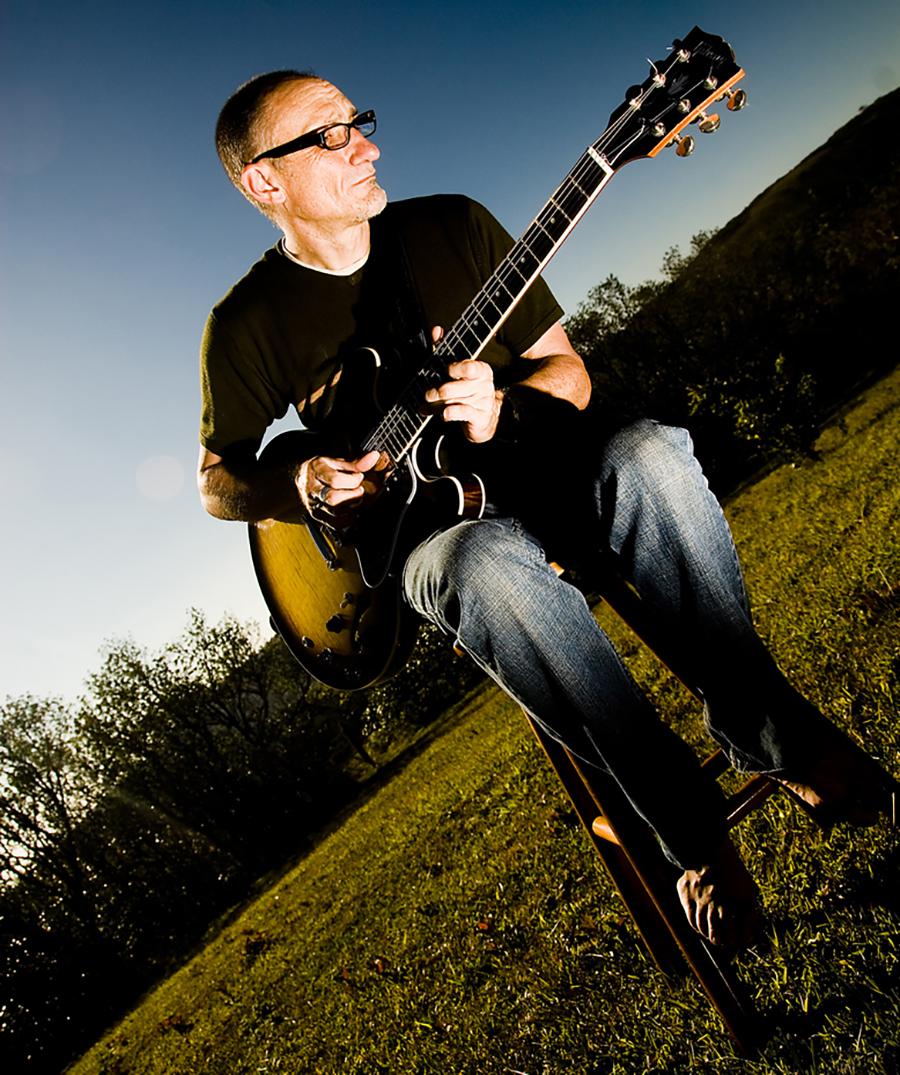 Photo: Jamie Midgely
Photo: Jamie Midgely
Robert Dean has lived a life of freedom and serendipity most of us can only dream of. He’s pursued music, visual art, and travel according to opportunities that revealed themselves organically, with little in the way of planning or long-term considerations.
Dean is primarily known worldwide as a guitarist for his work with the British group Japan between 1975-1981. Together with keyboardist Richard Barbieri, drummer Steve Jansen, bassist Mick Karn, and vocalist David Sylvian, the quintet rapidly evolved from glam-rock beginnings into an envelope-pushing new wave band. Japan went far beyond the conventions of the era, infusing electronic, avant, and minimalist elements into its sound.
After Japan’s highly-acclaimed 1980 release Gentlemen Take Polaroids, Dean departed from the group. He then worked with Gary Numan on his 1981 release Dance, and its accompanying tour. After that, he co-founded the short-lived UK new wave act Illustrated Man, which included ex-Gang of Four drummer Hugo Burnham, vocalist and bassist Philip Foxman, and keyboardist Roger Mason. The band released a single self-titled mini-LP in 1984 before dissolving.
Dean went on to work with Sinéad O'Connor on her 1987 debut album The Lion and the Cobra, including co-writing “I Want Your (Hands On Me).” He also contributed to ABC’s 1989 release Up.
Following those sessions, Dean temporarily relocated from his native Britain to Australia and established a new band called The Slow Club in 1990. It signed to Virgin, releasing a single album titled World of Wonders, with a sound that bridged British folk-rock with synthesizers and pop elements. It had an Australian hit with “Shout Me Down,” but its subsequent singles didn’t achieve similar traction.
The Slow Club proved to be Dean’s final statement as a musician for a very long time, save for a contribution to Jansen Barbieri Karn’s “Ego Dance” on their 1993 album Beginning to Melt. While he enjoyed the mini-reunion with his former Japan bandmates, Dean felt his creative vistas were leading him towards a realm outside of music.
By the early ‘90s, Dean had traveled through Latin America on a whim, and fell in love with Costa Rica. He subsequently relocated there and established himself as a renowned visual artist and ornithologist. He’s now considered one of the world’s premiere illustrators of birds and has worked on several best-selling field guides, including multiple editions of The Birds of Costa Rica.
While Dean no longer pursued music full time, he did play local cover gigs for fun. But in 2020, spurred on by Costa Rican singer-songwriter Isaac Moraga, Dean chose to return with a major recording project called Light of Day. Together, Dean and Moraga explore a highly-personal blend of expansive, anthemic songcraft infused with creative arrangements, electronics, and ambient elements. To date, the duo has released the full-length album Dimensions and an EP titled La Inmensidad.
In 2020, Dean also released Triptych +, an album with electronic musician Martin Birke. The instrumental recording focuses on the pair’s love of ambient music. It’s both experimental and accessible, offering a blend of atmospheric and quietly percolating, evolving pieces.
During an in-depth Zoom interview, Dean explored many facets of his personal and artistic journey, including his well-received return to the world of music.
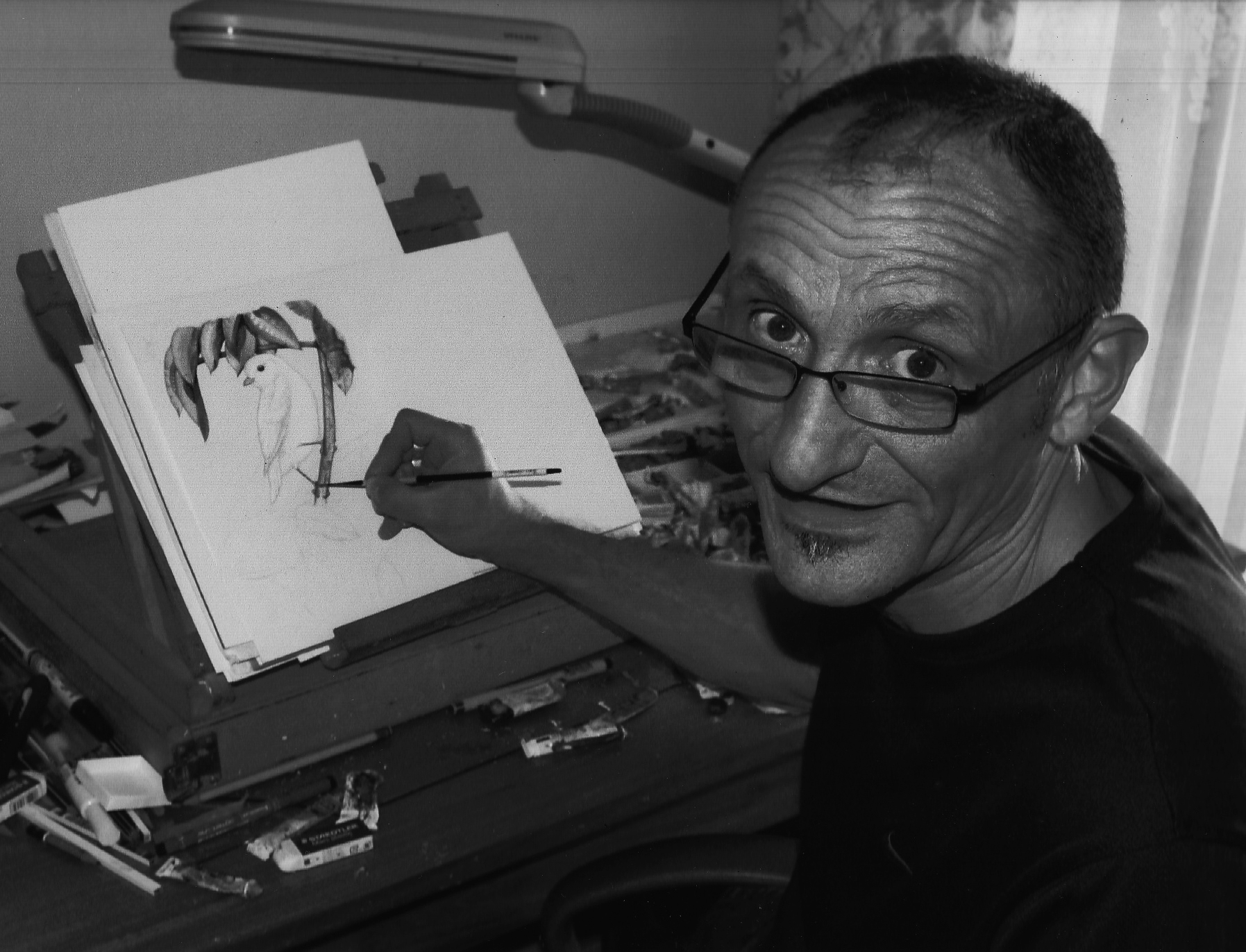 Robert Dean at his home illustration studio in Monteverde, Costa Rica | Photo: Robert Dean Collection
Robert Dean at his home illustration studio in Monteverde, Costa Rica | Photo: Robert Dean Collection
Tell me about your journey to Costa Rica 30 years ago and your decision to become an ornithologist and illustrator.
I first came to Latin America in 1990 when I went to Peru and Bolivia for five weeks’ vacation. Peru was a place I'd always wanted to visit and subsequently I became totally fascinated by Latin America. And when I came back to England from that trip, all I wanted to do was see more of it. So, I started planning a Latin America trip that was sort of open ended, which I thought would probably take between six months and two years. I started in Los Angeles, and then I went all the way through Mexico, Guatemala, Belize, Honduras, Nicaragua, and then Costa Rica.
In Costa Rica, things just kind of clicked. I met a woman who founded the first national park in the country. She had these little cabins on the beach and there was something idyllic about it all. It was something I felt was missing from my life. She asked me if I would help her run her place because she knew I didn't really have a plan. I was just traveling and whatever happened, happened.
I decided to stay in Montezuma, a very small village on the Pacific coast. And by living there, I got into birding because the birds are all around you and you can't really miss them. So, like everything I've ever done, I went into it not 100 percent, but 200 percent. I got into birding really heavily. And then I decided to start painting just for sheer pleasure. Some people saw my work who were working on field guides for birds in Costa Rica and I was asked to contribute illustrations. I said “Yeah, why not? I’ll give it a go.” Now, I’ve illustrated six field guides for the birds of Latin America and it’s my core income.
At what point did you realize becoming an illustrator could be a career?
It just fell into place on its own and made sense. I never really thought about it. I never really think about things at all, really. They just happen. I've always let my brain and heart take me where I should go. It seemed like a logical progression. I love wildlife. Ever since I was a kid, even though I grew up living in London, I was always so into it. I think a lot of things that influenced you in your formative years come back in later life. The interest regenerates. It was the same with music. The things that I listened to in the ‘60s and ‘70s are what I find myself listening to now.
Today, in some ways, I'm my own boss. I work at my own speed. The Birds of Costa Rica: A Field Guide pays the bills. The notion of making money from music just isn’t on the cards any longer, really. The book sells pretty well, except for the last couple of years because of the lack of tourism due to the pandemic. But each edition generally sells 50,000 copies and we’re getting ready to do the third edition.
Did you have any training as a visual artist?
No, not at all. When I moved to Montezuma, I thought one day “Oh, I think I'll get some watercolors and see if I can do some painting." And then I started painting, and the most logical thing for me to paint was wildlife. And it just went from there.
Was there a sense of relief in emancipating yourself from the fickle nature of the music industry?
I'd sort of given up on music when I moved here. I think at that point I thought, "Oh, well, that's not where my path is taking me." In fact, when I first moved here, I don't think I picked up a guitar for three years. I decided to put that aside. But as time went on living here, I eventually got back into playing again, just purely for pleasure. I had a little cover band and we'd play around for fun. It was just about playing my instrument without having to think about writing songs or being creative, because the creative side of me was going somewhere else at that point. It was somewhat liberating. At that point, I was adamant I didn't want to create any music. It was only in the last few years that I changed my mind.
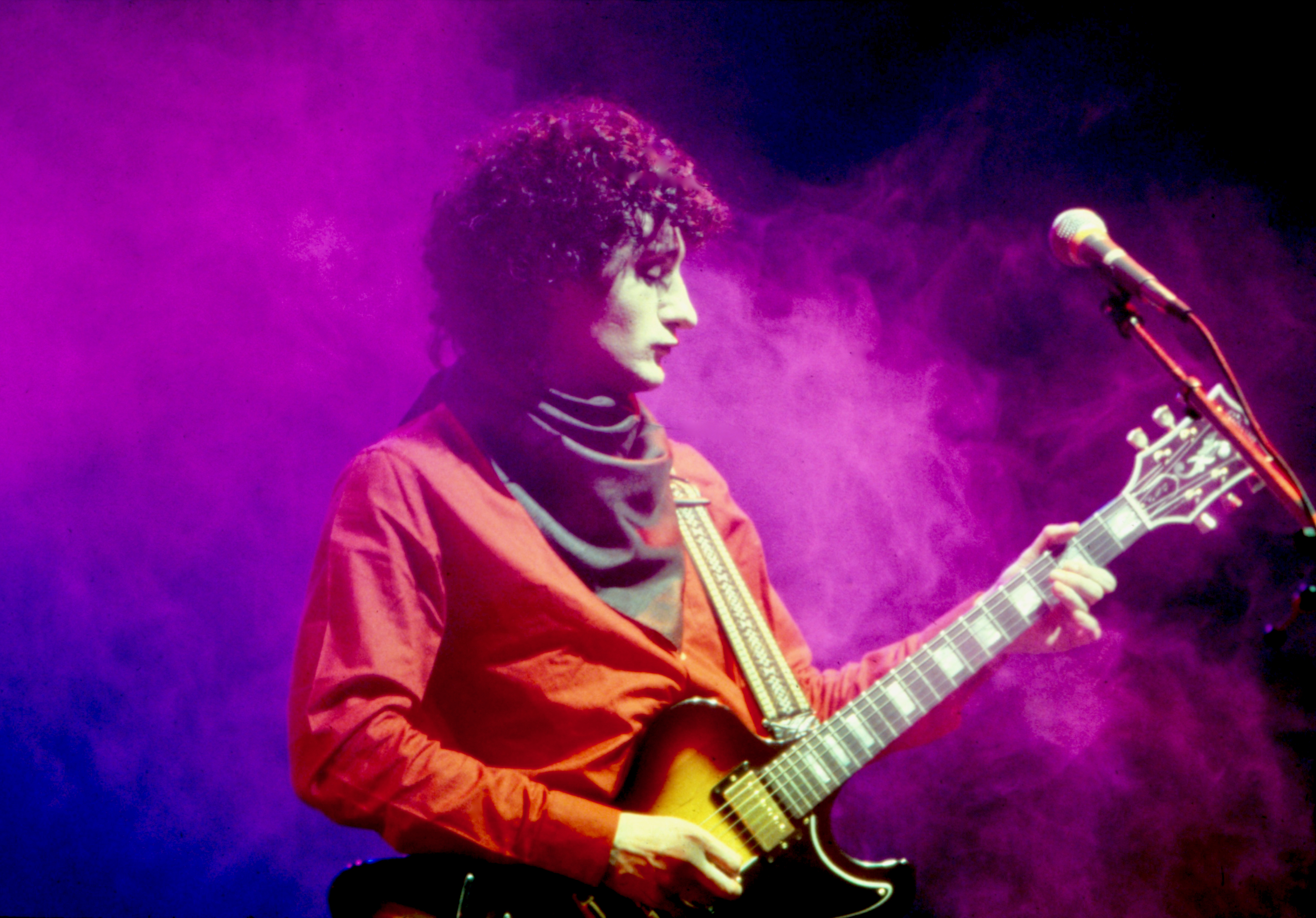 Robert Dean, 1981 | Photo: Fin Costello
Robert Dean, 1981 | Photo: Fin Costello
What made you decide you were done with creating music at that point?
I just didn't see a way forward with it or an outlet for it. I felt whenever my musical past came up in conversation or there were any references to it, that it was about someone else. It didn't feel like it was me at all. I think communicating with the media and people on social media brought me back into it as far as realizing that there was an interest and maybe I should dip my toe in again.
Elaborate on that rekindling and how it led to Light of Day.
How that happened was through a mutual friend named Darren Mora who was probably the authority on what music in Costa Rica is. I saw Isaac Moraga’s band play and we became friends in a mild sort of way because he lives in the Central Valley, near the capital. I live a long way away from that up in the Cloud Forest in Monteverde. He asked me if I would be interested in producing a record for him, and I thought about it a bit and decided “Well, maybe it might be fun to do that.” So, I agreed, but then over a period of several months I kept putting it off. I didn't have the confidence. Eventually, I realized I had to commit to it because I said I'd do it and that is important to me.
So, we booked some time in the studio, and started working on his material. I knew that I'd be playing on it, but I didn't want to be in any way prepared for it. I just wanted to go in and see what happened. And very quickly we realized that it was going to be a mutual thing because he had these bare bones of ideas and we just worked on them together and created pieces from them.
Provide some insight into the creative process that informed the Light of Day recordings.
I don't really see any Light of Day material as being songs as such. They're pieces of music, which just happen to have some vocals on them. It all came together organically. We'd get a drummer in, put down a drum pattern, add some bass over the top of it, and things would just happen. There was a lot of editing involved in that we did long recorded parts, and then we pared them down to create the pieces.
From the start, we wanted to create a very positive experience. We didn't want the album to be particularly moody and dark. We also wanted the pieces to go on a journey and evolve. That was something we agreed on straight away. We wanted things to go places we wouldn’t necessarily expect them to go. Generally, there would be an idea for a melody or drum pattern, and things just evolved from there.
Isaac came to me with some ideas, and I told him I purposely didn't want to work on them until we went into the studio. I would just listen to ideas and say, "Okay, well, I think this will work. And that will work.” His ideas were a creative springboard we used to jump off.
It was a straightforward process. Modern music production didn't really come into it. It was all live performances. The only consideration as it relates to modern music techniques was Auto-Tune on some backing vocal parts. I also used a Kemper Profiler, which is a combination guitar amplifier and effects processor. That was really fun. We had someone there to program it. But in many ways, Light of Day wasn’t done any differently to anything else I’ve recorded.
At first, we did six pieces. And then we took six months off and then got back into it and did the rest. It was all very experimental and improvisational, but at the same time it came together incredibly quickly. It was meant to happen. We had very little conflict, which was kind of nice, because in most recording situations, there tends to be some conflict somewhere, in my experience.
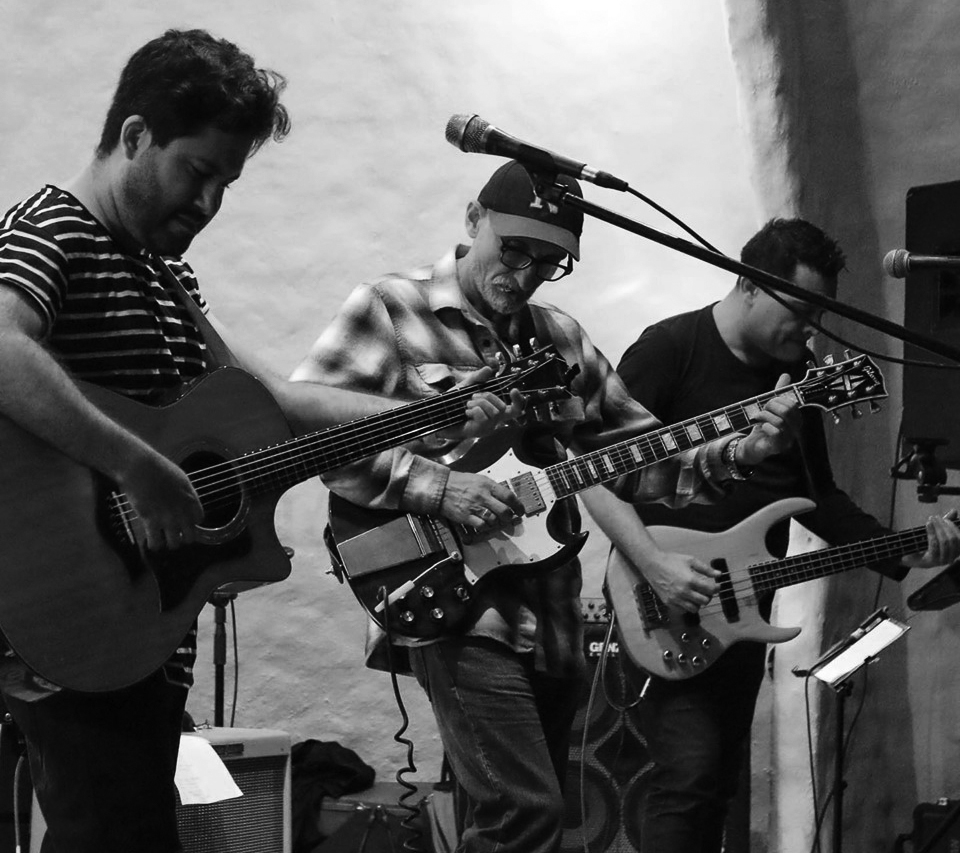 Light of Day in Concert, Costa Rica, 2019: Isaac Moraga, Robert Dean, and Harold Webb Fatjõ | Photo: Trevor Carlson
Light of Day in Concert, Costa Rica, 2019: Isaac Moraga, Robert Dean, and Harold Webb Fatjõ | Photo: Trevor Carlson
What was it like for you to rediscover that side of your artistic output?
It was like putting on a pair of comfortable shoes. It was a very enjoyable experience. I've always liked being in the studio and I’d forgotten just how much I'd enjoyed it. I really like creating arrangements and structuring pieces.
What does the future hold for Light of Day?
We're on hiatus at the moment. Personally, I'm thinking about the next thing I want to do, which is getting some musicians in the studio and just seeing what happens, with no preconceived ideas. The idea is inspired by what Talk Talk achieved, without spending a million pounds worth of studio time to do it.
Reflect on the making of Triptych + with Martin Birke.
It's influenced by Robert Fripp a lot. I find it quite easy to get into the frame of mind of working on ambient music. For Triptych +, I put down some quasi-ambient things and sent them to Martin Birke and he worked on them, put them all together and created pieces of music. I've never met him. We've only ever communicated on Facebook. Although I had some input, it was along the lines of “Well, I don't think this works” and “We need to create more space here.” It worked pretty straightforwardly. And I'd like to do more of that.
I've always wanted to do something like Triptych +, but what got in the way was the fact that I had to previously think about doing material that was going to be in some way successful. But I've always had it in the back of my mind to create music along these lines.
Tell me about the freeing element of making music today without being concerned about industry machinery.
You've hit it on the head. The fact is the machine is immaterial to what I can create now. It's not even a consideration. There's no way I'm going to get a hit record with something these days. And so, everything is entirely all on our own terms. It’s just being able to do it and make something I’m satisfied with. There’s no commercial sense at all, other than the music will hopefully garner an audience. I'm not going on tour with it. So, having people appreciate it is as far as it goes.
What's great is realizing that I can make these projects happen even at this late stage in my life. It's something that comes pretty naturally to me, I think. Recording anything is ultimately a satisfying experience.
What’s your perspective on the state of the music business?
I don't think it’s surprising to hear me say it's a sad state of affairs as far as what sells now. I know it sounds like an old guy saying, "You know, it was much better in my day." But I really do bemoan the lack of songcraft these days in pop music. I love pop music. I grew up with the Beatles and Burt Bacharach, and some amazingly-constructed material, and it's just not there anymore. Or if it is, it doesn't sell, and barely gets an audience.
I listen to new songs by new artists that people are raving about, and they seem to boil down to the same four chords over and over again. Verse, chorus, no bridge for this chorus, end. And to me that's very sad because the craft of songwriting is dead, or almost dead.
A lot of modern pop is also precision-crafted to adhere to streaming service algorithms. It’s resulting in actual song structures being influenced by hooking people into minimum listening time requirements in order to get credit for the stream.
Yeah, and I also hate how Spotify constantly pushes things at me that have nothing to do with what I’d want to listen to—nothing at all. When I thought I had to put my music on Spotify—because we thought we had to in order to get any sort of audience—the way it would link our music to other unrelated music, via something as simple as a shared keyword was insulting to me.
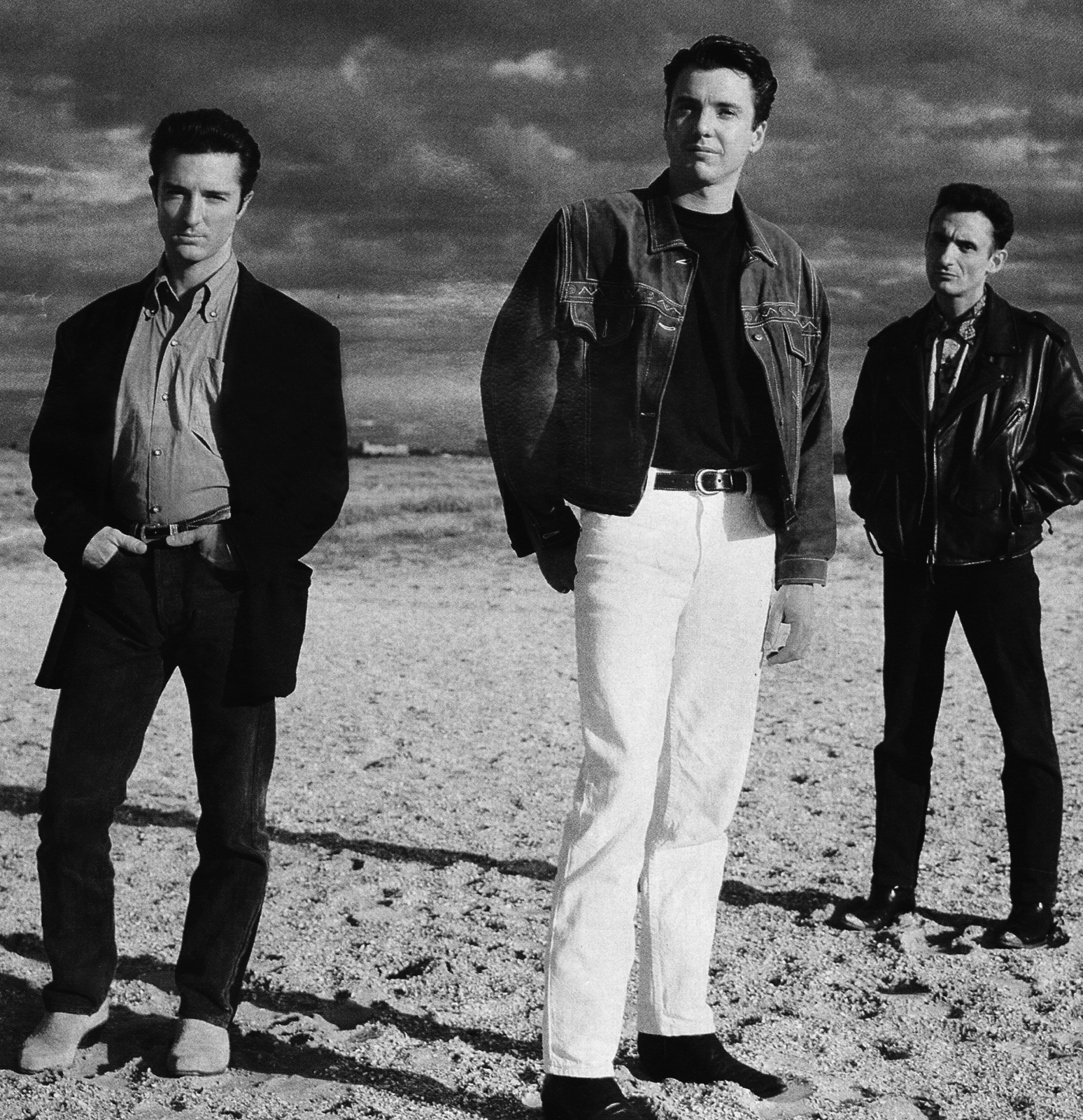 The Slow Club, 1990: Tom Hosie, Andrew Sefton, and Robert Dean | Photo: Virgin Records
The Slow Club, 1990: Tom Hosie, Andrew Sefton, and Robert Dean | Photo: Virgin Records
Let’s continue our reverse-chronological journey through your career by exploring your Australia-based group The Slow Club that existed during the late ‘80s and early ‘90s.
I had been working with Sinead O'Connor on her first album for about a year. The album was finished, and Sinead was pregnant with her first child, so the album was delayed until she had the child. So, there were about eight months of downtime. I got this offer to do a tour in Australia with a band through a friend of mine who I shared an apartment with in London, who was Australian. He was in a group called Geisha, who had a couple of modest hits. I thought “Why not?” I didn’t even listen to the music. I just said “Yeah, I’m coming.” Sometimes, you just have to go for it.
Geisha was a terrible name and they weren’t a band I particularly liked, but I did enjoy being in Australia. It was supposed to be a three-month trip, but it turned into six months. At the time, Warner-Chappell Music in Australia signed me for my songwriting. Once that happened, they suggested I put together a band as a vehicle for my songs.
At one point, I returned to England because my visa ran out after the tour. Then Tom Hosie, the drummer I shared an apartment with, went on a search for a singer in Melbourne. He found one we liked named Andrew Sefton, and I went back to Australia and we formed The Slow Club. It was named after the club in Blue Velvet, the David Lynch movie. I was a big Lynch fan and thought “That’s a cool name for a band.”
We recorded demos, got signed to Virgin Australia, and the label was very behind us. They were very positive and open to anything we wanted to do, which was quite refreshing. We pretty much made the album we wanted to make. I brought my friend Jon Jacobs over, an engineer who worked with me in Japan on Quiet Life. He went on to work with Kate Bush and Paul McCartney in the ‘80s, and also had started producing in his own right. So, it was my idea to co-produce The Slow Club album with him. I had strong ideas, arrangement-wise, and I knew him to be a great engineer.
The album was inspired by my long-standing interest in British folk-rock, and a little bit by my work with Sinead which had some acoustic parts in it. It was an opportunity to go back to my folk roots, but it also had a lot of electric elements and synthesizers. But in essence, they’re basically folk songs.
We put the album together and toured. In the ‘80s, Australia was very healthy for live music. You could see bands in a dozen places on any given night in Melbourne, with big audiences. We did a tour supporting Steve Winwood, and toured on our own. Our first single did moderately well, but after that, it didn’t take off.
Why was it a one-off thing with major label and publishing deals behind you?
I had to go back to England again to renew my visa, but after two renewals, they wouldn’t extend it further. I had to reapply in England, and during the time I was getting that sorted out, I went to Peru and that changed my life as we’ve discussed. I decided I didn’t want to go back to Australia. I wanted to experience Latin America. Also, being the boss was hard. It didn’t really sit well with me. What I wanted wasn’t always what everybody else wanted.
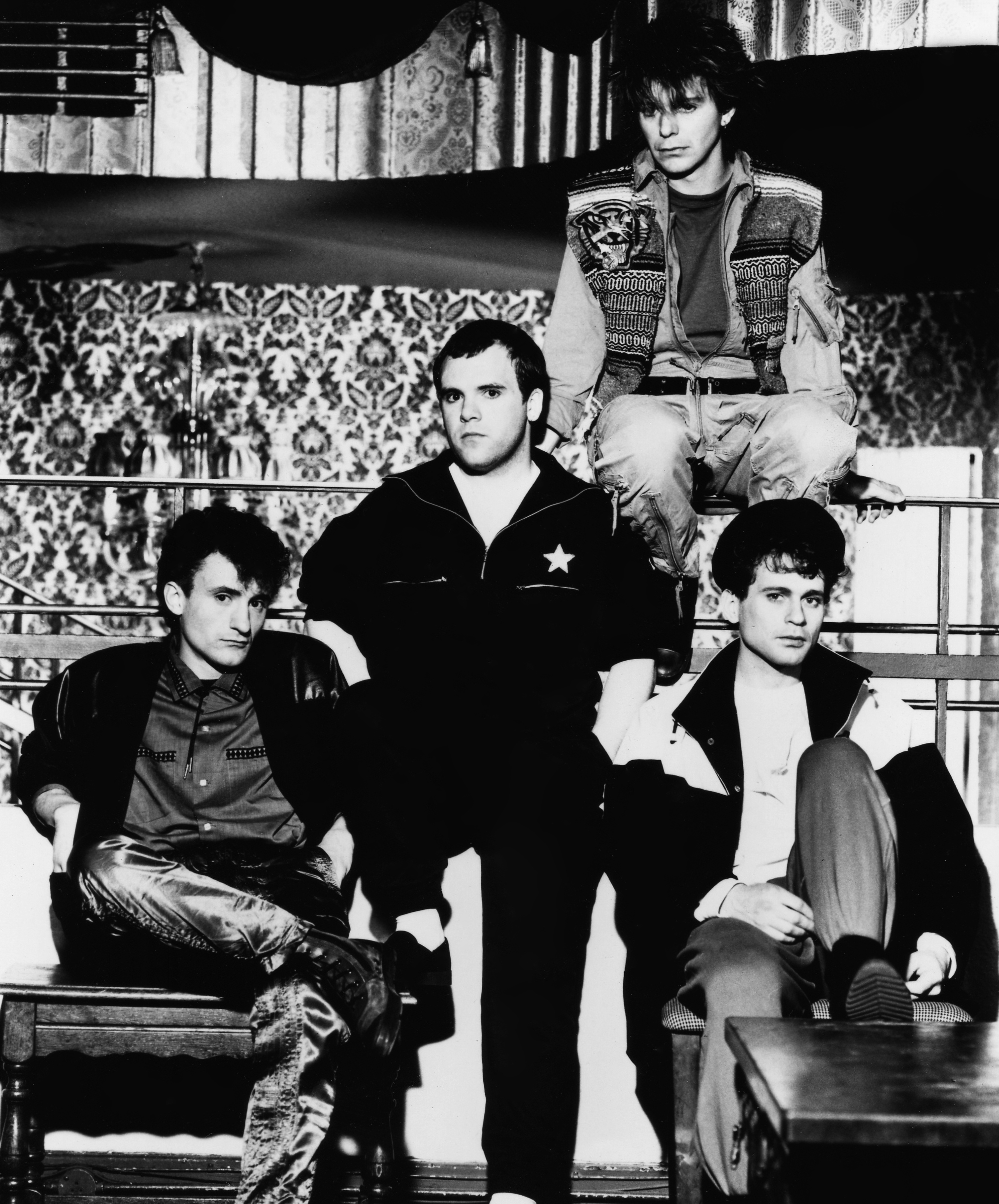 Illustrated Man, 1984: Robert Dean, Hugo Burnham, Roger Mason, and Philip Foxman | Photo: Mark LeBon
Illustrated Man, 1984: Robert Dean, Hugo Burnham, Roger Mason, and Philip Foxman | Photo: Mark LeBon
Prior to The Slow Club, you were in Illustrated Man during 1984, a group that yielded one self-titled EP. Tell me about that band’s brief existence.
We actually did a whole album, but only five tracks ever made it out through that EP. It was weird, because the album was done. We had the artwork and everything. But the person at Parlophone Records who was behind it left, and the next guy who got the job wasn’t interested in us, so the album was shelved.
The experience was a funny one. I was playing with Roger Mason and Hugo Burnham, two really good friends of mine, in that band. But none of us had total confidence in our front man, Philip Foxman, who basically started the project. It was his songs that got it rolling, but we never really clicked with him. It was all a bit superficial. We enjoyed playing together and the recordings have some decent parts on them, but I think it was a bit of a confused project.
You’ve described Illustrated Man as “a band doomed to failure from the outset.” Why?
Yeah. Philip had a development deal at EMI and when we got involved with it, it was basically a vehicle for his songs. Pretty quickly, we realized we weren't into it. Nonetheless, I enjoyed doing the album because John Punter produced it. We had remained friends after Japan. We had fairly similar likes and dislikes. After I left Japan, we stayed in touch and we’re still friends to this day. He’s visited me here in Costa Rica and it’s a friendship that goes way beyond any business. Going back to Illustrated Man, we toured the states, which was kind of fun. But the tour was the beginning of the end. Roger and I stayed in Los Angeles through 1985 after Illustrated Man finished.
What did you do during that year?
Not much. I went to movies and to Disneyland a dozen times. I love Disneyland. I grew up with Disney films. My parents took me to every Disney film whenever they came out in London, and I have a huge affection for Disney animation. Disneyland is so well put together that you can't help but be impressed with it, if you're into it in the first place.
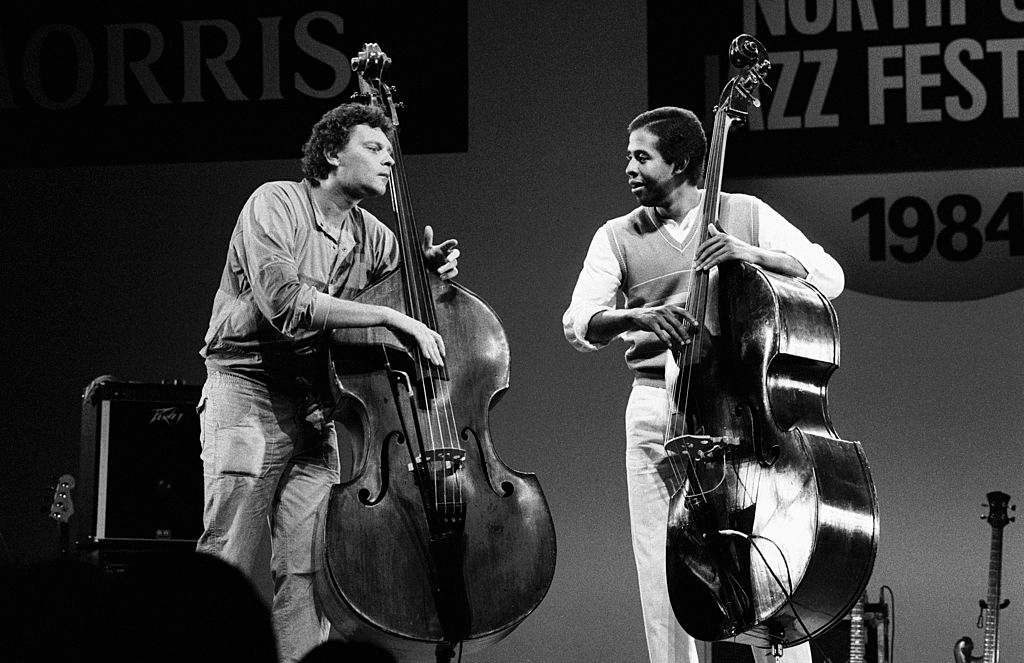 Miroslav Vitous and Stanley Clarke perform at the North Sea Jazz Festival, Rotterdam, 1984 | Photo: North Sea Jazz Festival
Miroslav Vitous and Stanley Clarke perform at the North Sea Jazz Festival, Rotterdam, 1984 | Photo: North Sea Jazz Festival
After the Illustrated Man album was finished in 1984, you traveled across European jazz festivals as a roadie for Stanley Clarke and Miroslav Vitous, during their duo tour that year. Tell me about that experience.
We had some down time before the album was supposed to be released, so Hugo and I told our managers Harvey Goldsmith and Chris Cooke, “If there are any gigs going on, we’ve got a few months off and can do something with our time.” Harvey said “Well, Miroslav Vitous and Stanley Clarke are doing a duo tour of all the jazz festivals in Europe over the summer, and they need their double-basses transported to all the gigs. So, if you're interested, you could do that." I was a big Stanley Clarke and Weather Report fan, so Hugo and I said “Yeah, sure, why not? Let’s do it.”
It was kind of weird because both Hugo and I are fairly small. We're not very tall people. And we had to meet Stanley and Miroslav at Heathrow airport to pick up their double-basses and take them to their hotel. But they're both like 6'6. So, we showed up and said “Hi, we're your road crew." And we're these two little guys, which was kind of funny. They probably wondered what the hell was going on. But we did it and it was more than just traveling around with their double-basses. We ended up working on all of their soundchecks, too. I'd play Stanley's bass with that horrible voice box thing. I'd have to make sure that worked.
We actually spent a lot of time with them in hotels and at bars. We'd just hang out and chat, which was kind of nice. Miroslav was a lot more intense than Stanley. Miroslav was always an hour late for everything. Stanley was very rigid about things. He wanted everything to be right, but we got on pretty well with them. Sometimes we’d be hanging out with them backstage and people like John McLaughlin and Chick Corea would show up. It was kind of cool.
I also remember we were in a hotel lobby in Germany and Miles Davis walked in with two bodyguards. He had one on each side. I'm a huge Miles fan and I thought, "I should go up and say something." And as he walked close to me, he looked me straight in the face with those intense eyes, and there was no way I was going to say anything to that man. [laughs]
Miles did a gig that night, which was one of my favorite gigs ever. I mean, it was just incredible. It gives me goosebumps just thinking about it now. There was something about it that was electric and very special.
I’m really glad we went on the road with Miroslav and Stanley. We didn't even know what we were doing, really. I can't even drive, so Hugo was doing all the driving. We did it just for fun and to make some money.
Did Clarke or Vitous know who you were and what you had achieved as a musician?
Not at first. They found out later. We talked and said, "Oh, we're doing an Illustrated Man tour in the US. So, come to a gig and see us play.” They said, "If we come, you better be good." I don't think they came, however.
Describe the importance of jazz on your musical psyche.
As I said, I’m a huge Miles fan. I’ve always been. When I painted birds for the first field guide, I had Bitches Brew on every day, all the time. It was my inspiration. Mahavishnu Orchestra’s Inner Mounting Flame is one of my favorite albums of all time, too. I was very much into the early-'70s jazz-rock thing. I saw Return to Forever, Mahavishnu, Herbie Hancock, and Weather Report in concert. it was definitely an important part of my musical education in the ‘70s.
I regard myself as lucky to get into music during the ‘60s and early-‘70s. It was such a fertile time. My sister worked for an attorney firm in London, and they had two seats for every show at the Royal Albert Hall. The staff weren’t interested in seeing any of the rock shows, so my sister would get those tickets for me. I saw everybody that played there between '69-'73. I’d be there five times a week sometimes and always had the same seats. I saw Frank Zappa, Led Zeppelin, Free, Johnny Winter, The Band, Simon and Garfunkel, Deep Purple, and Jethro Tull, to name a few.
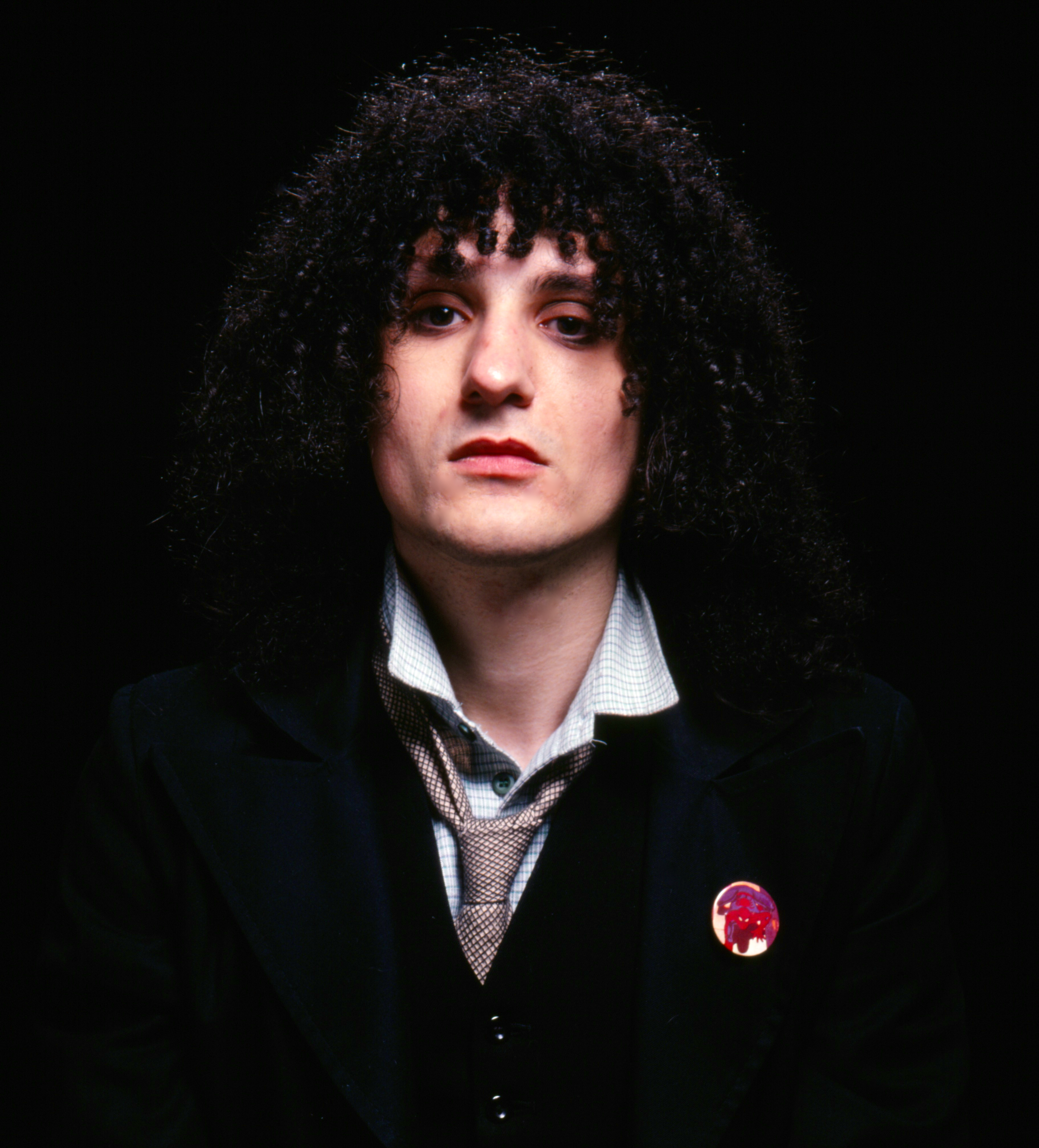 Robert Dean, 1978 | Photo: Brian Cooke
Robert Dean, 1978 | Photo: Brian Cooke
Between 1981-'82, you were part of Gary Numan’s orbit, working on his Dance album and accompanying tour. Reflect on that period.
Mick Karn was working with Gary on the Dance album and suggested I play on a track.
I had previously met Gary when he showed up during a Japan tour of Japan in 1980 without any of us knowing he was going to do that. I don’t think Mick even knew. Somehow, Gary thought he was going to be playing with us in some way, which never happened. He thought he was going to be on stage with us during an encore. Basically, he and his bodyguard would be in our tour bus, watch soundchecks, and come to the gigs. It was a very awkward situation. But he was enamored by the band. He said when he was stuck for an idea, he’d go to his car and listen to Gentlemen Take Polaroids for inspiration.
At that point, he had befriended Mick and I can only imagine Mick was with Gary one night at a club and said something like “Yeah, you should come to Japan with us” to Gary, not really expecting it to go any further. For the most part, none of us knew Gary and we didn’t particularly warm to him that much. Occasionally, I'd sit and chat with him, because everyone else seemed to be ignoring him.
As for Dance, I spent just one day in the studio. Gary worked really fast in those days. I was playing around with an Ebow, getting ready for a take. Gary had recorded me doing that and said “That’s fine.” And that was it. Listening to Dance, I think it has some good ideas, but it sounds like a demo. I think it’s underproduced and could have been realized better. But that’s the way things worked for him in those days.
A year later, I had moved to Los Angeles and was working with a band named Vivabeat, who were friends of mine. It didn’t have a record contract at that point. I bumped into Gary at Wall of Voodoo’s manager’s office. The people there were friends of mine, too. I saw Gary and said, “How are you?” He responded “Hello, do you want to be in my band?” That’s literally what came out of his mouth. I said, “We should talk about it.”
Gary had moved to Los Angeles at that point and was getting ready to rehearse for an American tour. We got together at his rented house the next day, had dinner, talked about it, and I agreed to do it.
We rehearsed quite a lot for six weeks. The band was me, Pino Palladino, Chris Slade, Roger Mason, and Gary's half-brother who didn’t really play, but did some miming stuff to tape—things like saxophone. It was a good band. Pino is a great bassist and Chris is a very solid drummer. We toured for a month, but Gary’s reputation in the US wasn’t significant. People knew him from “Cars,” but that was about it.
We had to downsize during the tour, but Gary initially insisted on having the full light show. I remember when we played Boston at a club with a fairly small stage that had all the lights up. They were hanging down right on Pino, who’s very tall. From the auditorium, you couldn’t see his head because of the lights, which was funny.
The tour wasn’t going well. At larger venues, half of the place would be curtained off to make them appear full. It was also a weird tour in that I was playing guitar and keyboards, because there were some songs without guitar parts. And when I was playing guitar, I was using Gary’s Les Paul Custom with his effects. So, I wasn’t playing with my own sound at all. Gary had a strange set up, with two flangers going at the same time with distortion, which was hard to tune—and stay in tune. In general, the tour was enjoyable though. We got to hang out in some cool places like New Orleans. And it was where Roger and I first started working together.
Expand on your time with Vivabeat, which you worked with briefly in 1981.
I met Marina Del Rey, the keyboard player, when she was working for the Ariola Hansa label in the US. She looked after Japan when we came to the States. We did a few small gigs there. That’s how we became friends. When Japan finished for me, I moved to the States and worked with her group Vivabeat. We shared a house together and played a lot of shows around California. But as I said, the band wasn’t signed, so it was very tough when we were a support act.
We did some recording, but not a lot. Once the Gary Numan option came up, it was a logical thing for me to move on to. I had to start making money, so that was the end of Vivabeat for me. I remained friends with them and would hang out with them when I’d visit the States.
Tell me about the Peter Gabriel connection to Vivabeat.
The link was that Marina once worked for a rock magazine and interviewed Peter for it. She did a lot of interviews after working for Hansa. They got on really well and she gave Peter a copy of the Vivabeat demo “Man From China,” which he really liked. He told Charisma about Vivabeat and they signed them to a one-album deal. There’s a whistle part on the song “Man From China” which influenced the recording of “Games Without Frontiers” which also includes a whistled melody. So, that’s the connection.
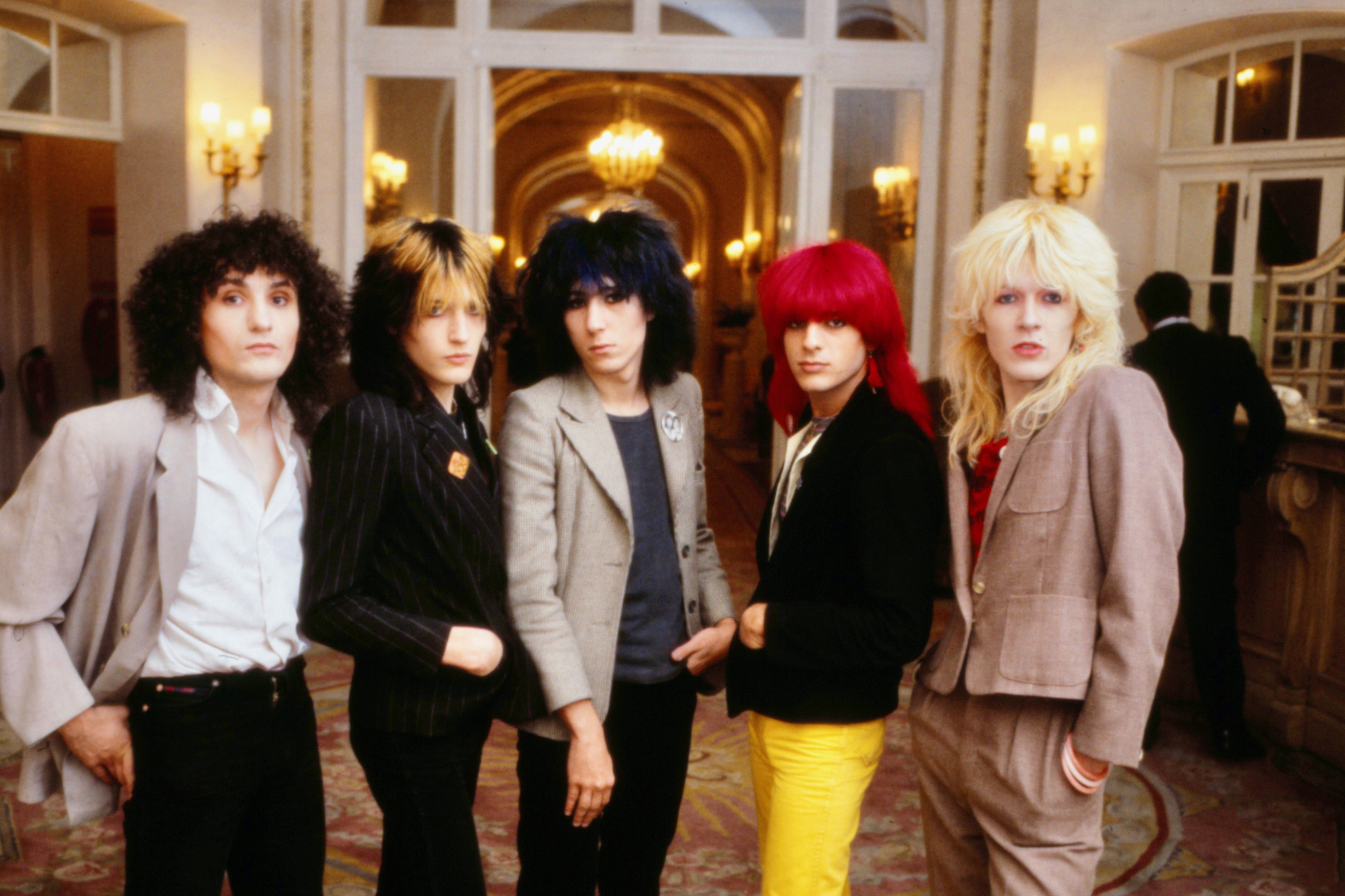 Japan, 1978: Robert Dean, Steve Jansen, Richard Barbieri, Mick Karn, and David Sylvian | Photo: Günther Rakete
Japan, 1978: Robert Dean, Steve Jansen, Richard Barbieri, Mick Karn, and David Sylvian | Photo: Günther Rakete
In 2021, you were involved in a super-deluxe edition of Japan’s Quiet Life. What was it like for you to be a part of the dialog on the group again after being removed from it for decades?
As we discussed, when it comes to Japan, it feels like I’m talking about somebody else, not myself. It’s only recently I’ve come to terms with it and being comfortable with it. What's heartening is that there are a lot of people that appreciate the band now, which I wasn't really aware of for many, many years. So, that's cool. The most important thing to me is that the fans get what they deserve. I feel they've been shortchanged over the years, as far as the band’s connection to them. When Japan was active, I always felt there was an aloofness towards them, which I didn't really feel was fair. So, anything I can do to cement that link is important to me, now. Working on something like the Quiet Life reissue was something I felt good about doing. It was my idea to get John Punter to write something for it and I was happy my general input was appreciated by the record company.
What level of involvement did you have in it?
I provided suggestions all the way through the project about what I thought should be done, right down to ideas for designing for the packaging. I gave my okay on things when they were needed, like the mastering. I was always very positive about the project from day one. I just wanted it to happen, because I felt it deserved that treatment. I think it's an album which has weathered the time really well. I think it stands out today. I think there are a lot of positives about it. That was a very happy time in my life and the best recording experience in that period for certain. I think the majority of the rest of the band would agree with that. We were having a good time when we were making Quiet Life and I think you can hear it in the music.
How much collaboration with other band members was there on the reissue?
Not a lot. I’m in contact with Richard Barbieri, but it's not like we talk all the time or anything. His hope was that there would be a surround mix included, but they couldn’t find the master tapes, so that wasn’t possible. So, his involvement was limited. Steve Jansen was more hands on. He mastered the live CD included in the deluxe package.
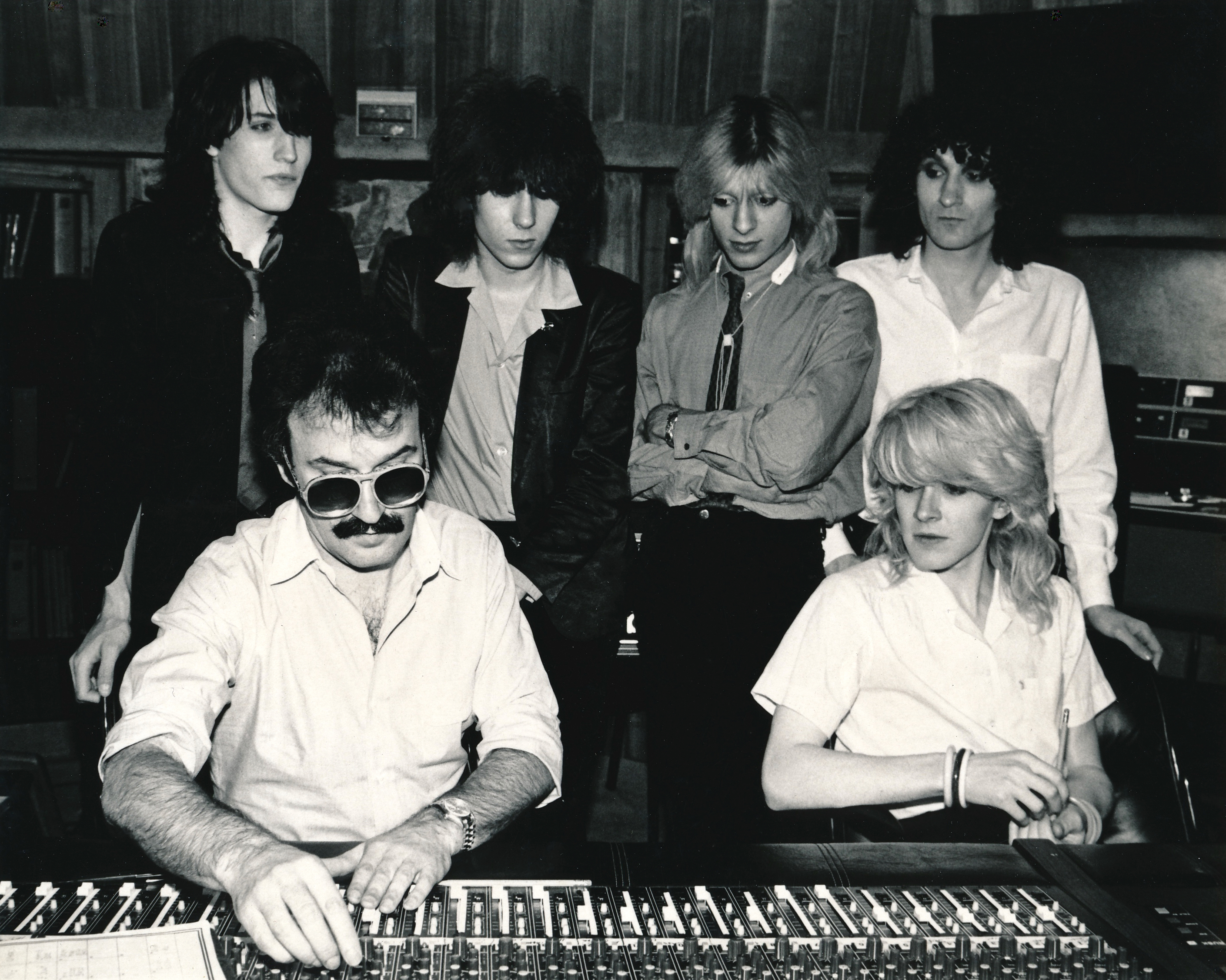 Japan, 1979 "Life in Tokyo" sessions: Steve Jansen, Richard Barbieri, Mick Karn, Robert Dean, David Sylvian, and Giorgio Moroder | Photo: Hansa
Japan, 1979 "Life in Tokyo" sessions: Steve Jansen, Richard Barbieri, Mick Karn, Robert Dean, David Sylvian, and Giorgio Moroder | Photo: Hansa
Japan was a band known for complex relationships. Describe why Quiet Life represented such a positive moment for the group.
I think a lot of that was down to John Punter being a very positive presence in the studio. Up to that point, we'd worked with a producer called Ray Singer who we weren't particularly happy with. The record company had thrown him into our circle. We never really felt a connection with him. Quiet Life was the first time in which I think we had a lot more confidence about what we were doing. The band had evolved to a point where it knew what it needed to sound like, and Punter was the perfect person to realize that. And we all got on really, really well. I mean, we'd even go to the pub. Imagine David Sylvian in a pub. Also, working at AIR Studios was great because we were interacting with a lot of really interesting musicians. It was a four-studio complex, so it was a real hub of activity. We brushed shoulders with lots of exceptional people. In addition, we had respect from our peers who we were surrounded by.
Talk about the shifts that occurred between Quiet Life and Gentlemen Take Polaroids.
Well, I think the problem with Gentlemen Take Polaroids is that it was important not to make Quiet Life part two, but because we used the same producer and orchestrator, there were obviously going to be similarities. But I think that David Sylvian in particular felt like he wanted to make a very different record. He was frustrated by the fact that all the elements were the same as before. He wanted to kind of push things further and he was certainly getting more sure about himself. And the thing is that we had moved on, but we also hadn't moved on in a way. So, there was this kind of push and pull. I, for one, didn't want to just go through the motions of doing the same stuff I did on Quiet Life.
The band was also becoming more of a keyboard-oriented affair at that point. There was a strong influence of Yellow Magic Orchestra and Kraftwerk on it. I found creating guitar parts for some of that work was quite challenging. In some cases, it proved impossible. At the same time, I felt that given the way David wanted things to go, I didn't want to rock the boat. It was weird for me. It was walking on eggshells. I wanted to fit in, but at the same time it was clear he didn't want to make a guitar record. And that's kind of hard when you're the guitarist. The writing was on the wall that my time in the band wasn't meant to last too much longer.
The other thing about Japan is it had four people that had grown up together. Until some girlfriend-related stuff happened, they were extremely close. I was close to an extent, but I was also always the outsider. I had my own friends I wanted to hang out with in social situations. I didn’t necessarily want to spend more time with the people I’d been spending three months with 24/7. I had my own agenda and I think that’s why it began drifting apart. I didn’t want to be with them all the time.
How were you told your tenure in the group was over?
The way that happened was a bit iffy. The rest of the group went into the studio without me to do “Art of Parties.” I only found out because I bumped into one of the engineers from AIR Studios on Oxford Street and he said “Oh, I thought you were in the studio with Japan.” I said “No.” And he spilled the beans that they were recording without me. So, I learned about it, but didn’t say anything. About a week later, David called me and said, “I think this is time for you to finish with the band.” I said “I’m fine with that. I’m kind of relieved, in a way.”
It felt okay to me, as far as my relationships with everybody went, except David. With David, it’s understood that once he doesn’t require you any longer, he shuts himself off away from you. But we did a tour for the "Art of Parties" single that I was a part of, which in some ways was fine. I still got along well with the others and just kind of ignored David, really. It was the way it goes. I haven’t spoken to him since. My relationship with the rest of the group was fine. I was closest to Mick. He was more into having his own life away from the band. We spent a lot of time together over those years. When I was living in Los Angeles, he came to visit, which was fun.
When I moved to Costa Rica, I was pretty cut off from people. It was the early days of the Internet, and I didn’t have a laptop until 2000. In the '90s, Costa Rica was fairly behind, technologically. I lived in a village that only had two telephones. It was very basic, and kind of more alluring because of it. So, I wasn’t in touch as much by that point.
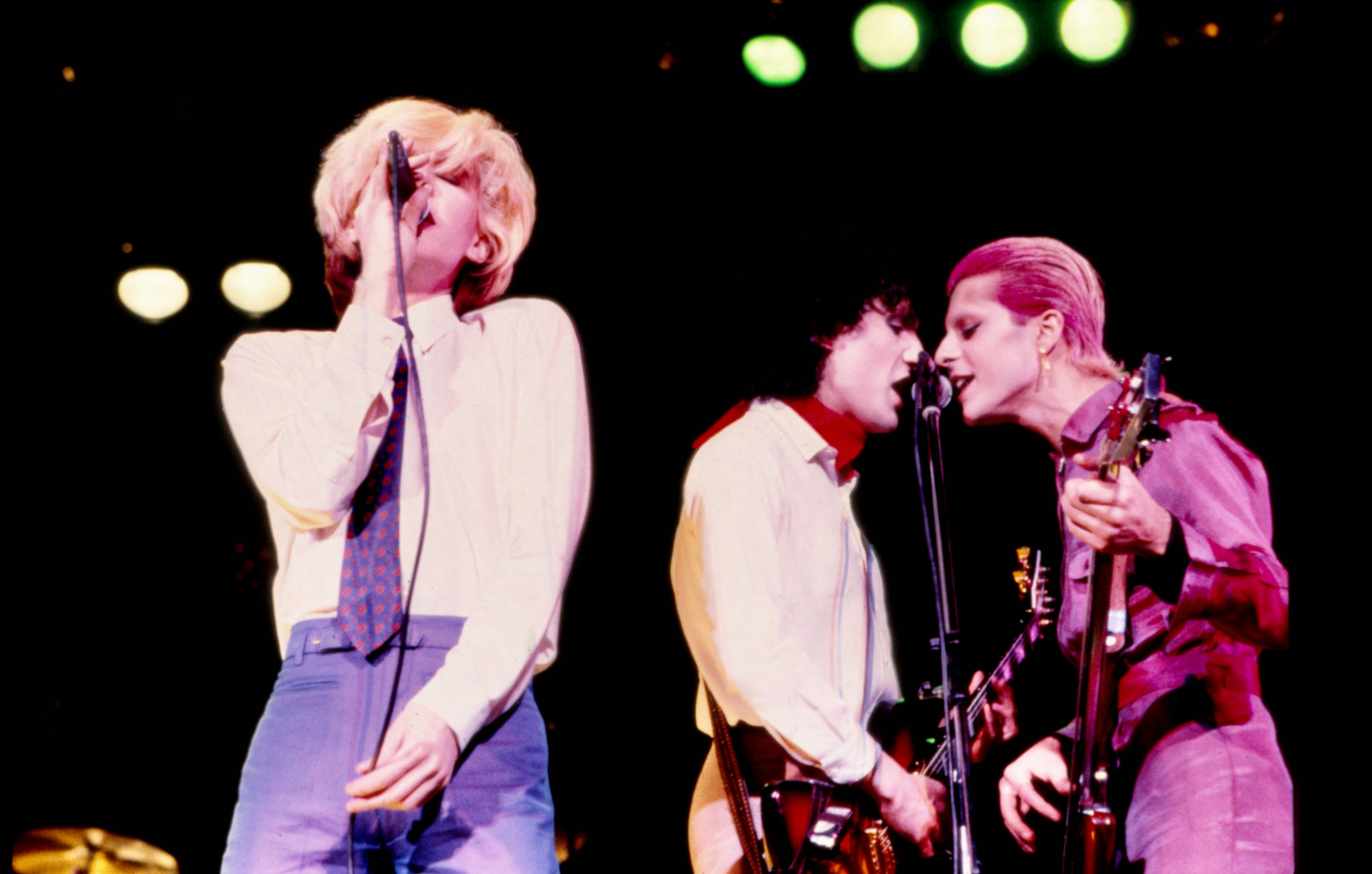 Japan, live 1980 | David Sylvian, Robert Dean, and Mick Karn | Photo: Koh Hasebe
Japan, live 1980 | David Sylvian, Robert Dean, and Mick Karn | Photo: Koh Hasebe
Do you feel you’ve received your due as a co-founder and key member of Japan?
Well, I do feel that the perception of my contributions is somewhat unfair. The unfortunate thing is that the band didn’t really get popular until Tin Drum, which is their touchstone, and I wasn’t a part of it. So, I can understand it. But at the same time, I do feel left out quite a lot, actually.
What was it like for the band to achieve success with the next album after you departed?
The first time I heard “Ghosts,” I knew it was a hit record. It was so different. It has a minimal structure with everything fitting perfectly into place. I was impressed. I can’t say that for the rest of the album. I find Tin Drum to be a very clinical record and I don’t really approve of the obvious Chinese connotations. I think it was a bit superficial in that way. Yeah, okay, everyone understood the band had a fascination with all things Far East, but it felt contrived. It’s not how I would have made a record.
You once told me that you’re very happy Japan never became big enough for a biopic to be created. Why?
That would be the biggest nightmare I can think of. It’s bad enough to have someone else write a biography, and there are two on Japan. They were very hard for me to read. It’s all too personal. But the idea of people playing you on screen? I find that extremely scary. I probably wouldn’t be able to watch it. If you weren’t there, how do you know for sure what happened? Rock biopics tend to be so generic and uncomfortable. A lot of them are jokes, really. So much is out of the control of the actual musicians. Once the story becomes a movie, suddenly there are all these other voices in play and people who had nothing to do with it have input. It all gets out of proportion to the point where it might not have anything to do with reality.
In general, how do you look back at your Japan years?
It’s my musical education, really. I wasn’t in any bands before that and I learned a lot, including how to play in front of large audiences. Everything I do to this day as a musician is related to that. I’m grateful for it. I learned a lot as an arranger. There are things I hated about the situation, but there were a lot of positives to be taken away. I don’t regret any of it.
What’s it like for you to see photos of yourself from the Japan era, today?
It’s hard in that it was never really me. It was my stage presence, but had nothing to do with who I am. I was okay with it at the time. I uniformly loathe seeing myself playing on video or any interviews from that period. I’m a pretty modest, low-key person. I hate it when people post videos of me to social media. It’s weird, because in Costa Rica, I’m something of a celebrity, but it has nothing to do with music. I do interviews for TV on bird paintings. I’m not that comfortable with doing that, either.
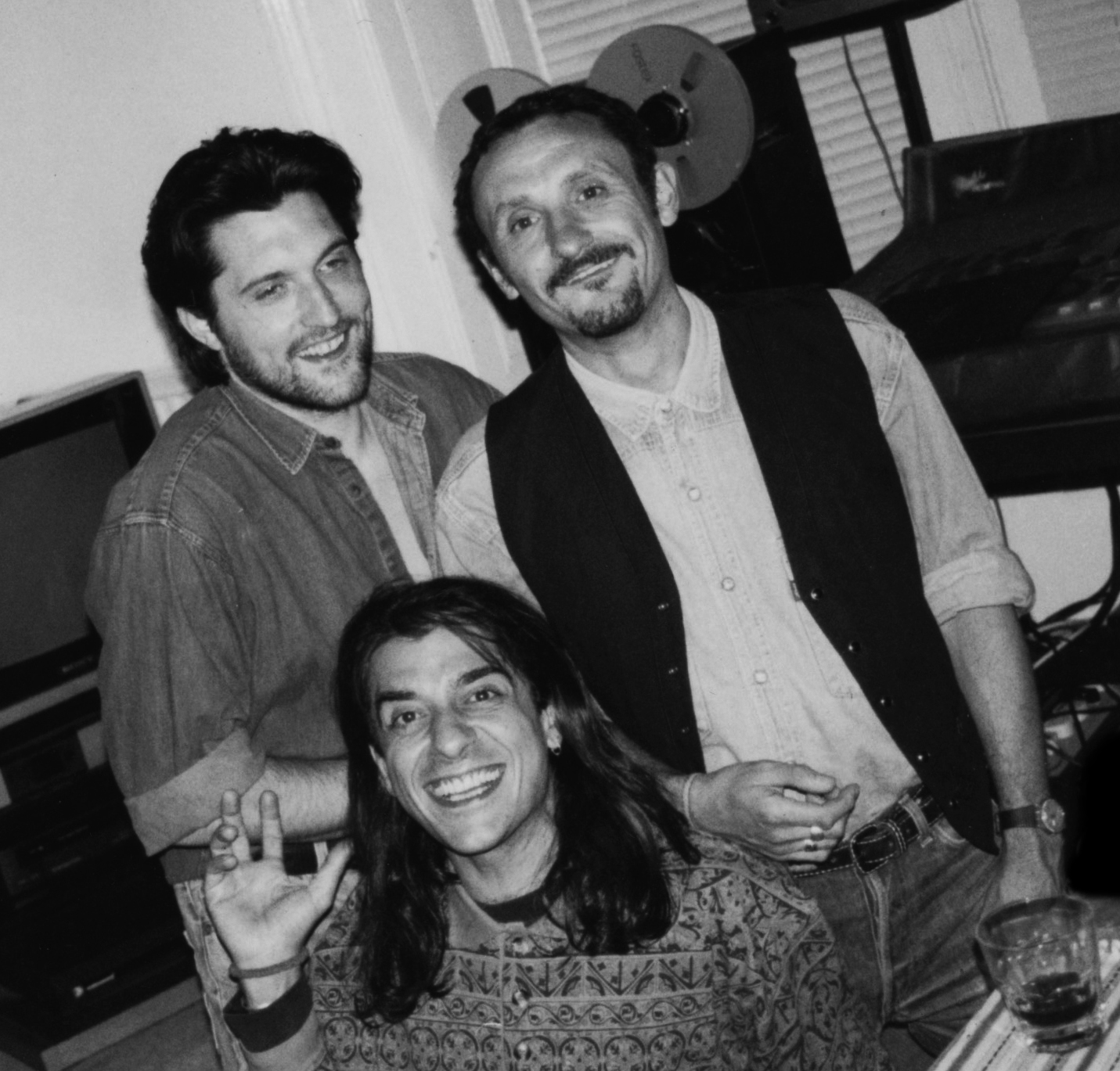 Steve Jansen, Robert Dean, and Mick Karn during the 1993 Beginning to Melt sessions | Photo: Debi Zornes
Steve Jansen, Robert Dean, and Mick Karn during the 1993 Beginning to Melt sessions | Photo: Debi Zornes
You played guitar with Jansen Barbieri Karn on “Ego Dance” from their 1993 Beginning to Melt album. How did that reunion occur?
I had planned a trip back to the UK for three weeks that year. I was in contact with Debi Zornes, who ran the Medium label. She said they were doing an album and they’d like me to play on a track. At that point, I hadn’t played guitar for two years, so I was a little wary of the idea, but I agreed. I went to Steve’s home studio, and it was really quite relaxed, except when I was recording. I wasn’t comfortable recording after so long. I didn’t feel I was doing my best because I was under-rehearsed, too. So, I’m not happy with the playing, but it was nice hanging out with everyone. I met Steven Wilson and Theo Travis at the time too, who were both working on that album.
Rich, Mick, Steve, and I always got on well, right up to the end. We never had a problem. I’ve kept up with their careers as time has gone on. I’ve listened to almost everything they’ve done. I was really impressed by Steve’s Slope album. There’s a lot they’ve all done that’s really good, but I don’t love all of it.
What's your perspective on the value of music during this dark, strange period we’re living through?
It's very, very important. I get frustrated with all the Zoom concerts involving people with a guitar standing there singing at you for an hour and charging for it. I understand it, but it’s bad enough seeing people do it, much less having to pay for it. But I think there’s been a lot of rediscovery about what matters about music in your lifetime and what it means to you. We’ve had more time alone with our music collections.
It’s a challenging time. Brexit has messed up all of Europe, as far as music is concerned. I’m talking about both live music and distributing music. I don’t know how they’re going to fix that. I also think there’s some irreparable damage that has to come from the whole COVID-19 experience.
However, there’s always going to be music to listen to. My hope is there’s going to be some sort of real renaissance that happens, like the punk thing. But it hasn’t yet. It’s all been a bit complacent. Maybe it’s still coming. I’m still looking for something important to come along and move things forward, somehow.
Special thanks to Steve Jansen for photos and visual processing.